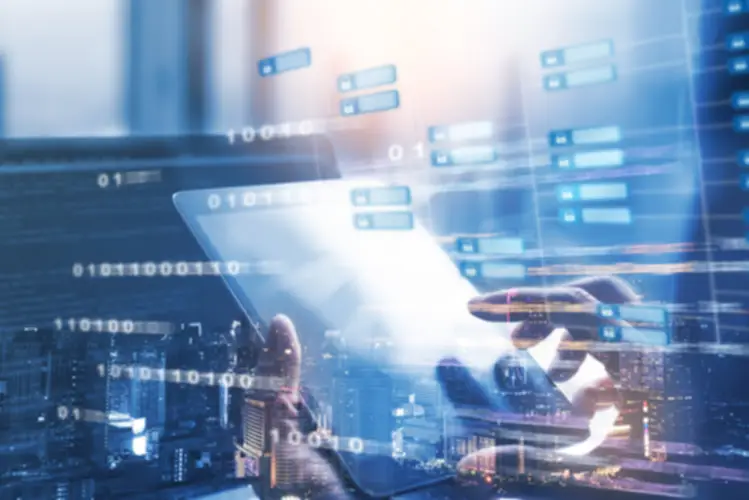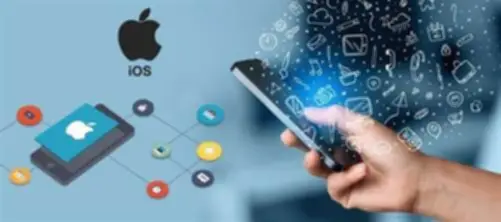Whereas cloud techniques provide ample bandwidth, real-time applications that require quick response instances could suffer from noticeable delays. Cloud computing adopts a hierarchical architecture with a centralized mannequin. It employs a community of remote data facilities where AI Robotics information processing, storage, and management happen. It is dependent on centralized data facilities in far-off locations, generally known as “the cloud.” Users might use these sources whenever they select, just paying for the companies they really use. Scalability, flexibility, and cost-effectiveness of cloud computing make it excellent for processing and storing enormous quantities of information. When knowledge gets to the fog layer, the node decides whether to course of it locally or ship it to the cloud.
Azure Vs Aws – Which Expertise Is Healthier
In cloud computing systems, latency is usually excessive due to the centralized nature of the platform. Users access these resources by way of the web, typically using https://www.globalcloudteam.com/ virtualized environments. It decentralizes information processing by bringing computing assets nearer to the network edge.
Fog consists of a number of nodes (fog nodes) and creates a local community which makes it a decentralized ecosystem — the primary difference between fog and cloud computing. Fog computing is a distributed computing model that’s designed to enrich edge computing. It extends the capabilities of edge computing by offering a layer of computing infrastructure between the edge devices and the cloud.
IoT growth and cloud computing are among the core competencies of SaM Options. Our extremely qualified specialists have huge expertise in IT consulting and custom software program development. Do you need help with selecting computing and information management solutions for your project? Depart your message and our experts will contact you within in the future to speak about your needs. Want help with choosing and setting up information infrastructure and providers on your IoT application? When leveraged neatly, these computing frameworks can empower businesses to boost operational efficiency and foster accurate decision-making, in the end accelerating revenue advertising efforts.
- There is a growing need for fast, reliable, and efficient computing techniques.
- The cloud’s huge assets enable for intensive data processing duties, advanced analytics, and storage of monumental datasets, far beyond what fog or edge computing can achieve.
- These devices even have a adequate quantity of memory and computing sources used to gather and course of the info.
- They present extra compute assets and companies to edge units, which permits organizations to process extra information in real-time.
This additionally helps to decrease your operating prices as you’ll be paying just for the cloud companies you employ. Today organizations are utilizing Edge, Cloud, And Fog Computing providers to handle their information and applications. Edge, Cloud, And Fog Computing may have some commonplace features however are completely different layers of IIoT. These technologies allow the organization to benefit from knowledge storage sources. The Economic Internet of Issues (IIoT) is a growing industry that requires more environment friendly ways to handle data transmission and processing. With cloud computing, information is saved and processed in distant information centers managed by cloud service providers.
Overall, selecting between these two methods depends largely in your specific needs and targets as a consumer or developer. In addition to providing quick and easy accessibility to info, cloud computing additionally permits for real-time collaboration amongst people and organizations. Whether you are working on a project with colleagues or sending large recordsdata to family and friends, the comfort and suppleness of cloud computing make it an indispensable device for contemporary companies and individuals alike. This was as a end result of fog is referred to as clouds which may be near the bottom in the identical way fog computing was related to the nodes that are present near the nodes somewhere in between the host and the cloud. It was supposed to convey the computational capabilities of the system near the host machine.

Real-world case research illustrate successful purposes, whereas practical advice helps navigate widespread obstacles. A must-read for anyone involved in healthcare delivery, analysis, or policy, this book provides invaluable insights into the means ahead for healthcare technology. It equips healthcare professionals and technologists with the information to leverage these rising instruments to improve patient outcomes, safeguard digital health data, and streamline healthcare supply techniques. There is one other method to data processing much like fog computing — edge computing.
Difference Between: Fog, Edge, And Cloud Computing Fashions
Cloud, edge and fog computing are sometimes talked about at the facet of IoT as a outcome of these applied sciences assist each other. Web of Things depends on different knowledge administration providers to store and analyze IoT gadget information and metrics, enable automation, etc. In this submit, we are going to compare these three types of data technologies side-by-side, be taught in regards to the difference between cloud, fog and edge computing, and study the advantages of each approach. Cloud computing is the supply of on-demand computing providers – from functions to storage and processing power – usually over the web. Edge computing is constrained by the restricted processing energy and storage capacity of the local gadgets it operates on.

First and foremost, all three paradigms goal to optimize knowledge processing by alleviating the load on central computing sources. Cloud computing does this by distributing storage and computing duties across servers in varied areas. In distinction, fog and edge computing bring processing closer to the information supply, however all aim to handle and process knowledge more effectively than traditional computing fashions. This shared objective enhances general system efficiency and user experience by making knowledge dealing with extra scalable and adaptable to particular needs.
This means that the consumer can improve his/her person outlined ICI firmware when the network is deployed and in full operation, so new sensors/actuators could be included when the need happens. One example of Mist Computing is in Radiocrafts’ own Intelligent C-Programmable I/O platform, or as we like to name it, ICI. ICI is a tool to allow customers to entry the on-board resources on the RF module such because the processing engine, the digital and RF interface, timers and memory what is cloud computing and fog computing. It enables community designers to create their very own software utilizing high-level C code.
This combination ensures high performance, economic system of scale, and scalability. Heavy.AI is a robust artificial intelligence platform that enables businesses and developers to simply construct and deploy AI-powered functions. Heavy.AI is built on high of the favored TensorFlow open-source library, making it straightforward to get started with deep learning and neural networks. With Heavy.AI, you probably can rapidly practice and deploy your customized fashions or use one of the many pre-trained models obtainable in the Heavy.AI market. Fog computing is usually utilized in cases the place real-time response is needed, such as with industrial control techniques, video surveillance, or autonomous automobiles.
On one hand, cloud computing is highly dependent on having a robust and reliable core community. Without a high-quality network, information can become corrupted or misplaced, which may have serious consequences for users. In distinction, fog computing takes a decentralized method, relying on methods on the fringe of the network, such as individual units or sensors, to store and course of data. Cloud computing depends closely on centralized networking and communication, utilizing massive data centers to connect customers to information and applications. In contrast, fog computing operates via a extra distributed network, with individual units serving as factors of contact between customers and data sources. This allows for quicker communication speeds and more efficient resource allocation, making fog computing an attractive choice for a lot of fashionable purposes.

They offer a software improvement package to assist the developer construct applications to run on AWS and cost folks per million messages sent between a tool and the server. Edge computing processes information immediately on the devices that generate or collect the info, corresponding to on smartphones, industrial machines, or automobiles, thus minimizing latency to the utmost diploma. In Accordance to projections by IDC, by 2025 the world will witness 55.7 billion IoT units, producing almost 80B zettabytes of information. Companies are persistently integrating their inside operations through digital networks, understanding the criticality of widening their operational ecosystem. This growth is geared in direction of catering to customer and market calls for, enhancing adaptability, and strengthening resilience. As such, when contemplating the professionals and cons of cloud vs fog computing, the question of location consciousness becomes an necessary issue to think about.
We described how each of them works with information and made a fast cloud computing vs. fog computing vs. edge computing comparison to indicate where each strategy works best. The major difference between cloud, fog and edge computing is where, when and the way knowledge from endpoint devices are processed and stored. They rely on a network of sensors and devices positioned throughout a metropolis to gather information and make decisions about the means to optimize city providers and infrastructure.
There is a big debate currently on which know-how is healthier for companies – fog computing or cloud computing. Here, we are going to explore the key advantages of each technologies to find a way to differentiate cloud computing from fog computing and make an informed determination for your small business. This implies that data processing and analytics can happen near the information source, lowering the quantity of traffic that should journey to the cloud. Fog nodes can also act as intermediaries between gadgets and the cloud, caching or buffering knowledge when essential. The integration of the Web of Issues with the cloud is a cost-effective approach to do business.
